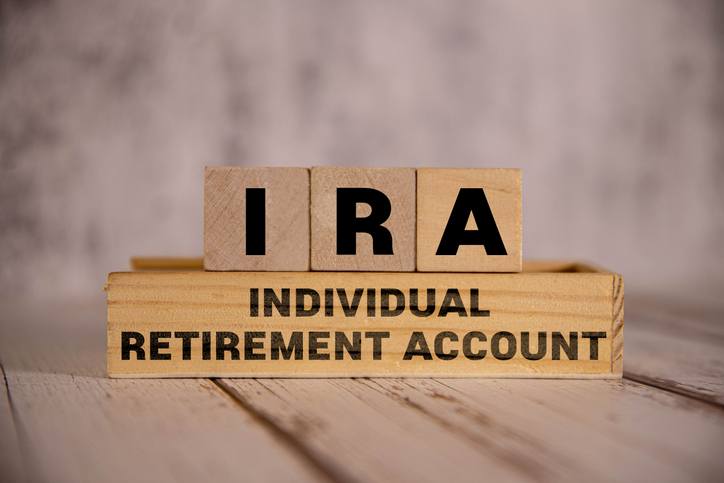A Roth IRA is a tax-advantaged retirement account many people use to build long-term savings, but its rules and benefits can be confusing. Because qualified withdrawals are tax-free, the investments you select inside the account may influence your future retirement income. Whether you are opening your first Roth IRA or updating an existing one, knowing how to build and manage the portfolio can help you align it with your long-term goals.
A financial advisor can help you develop a retirement strategy that aligns with your financial situation and long-term goals.
How a Roth IRA Portfolio Works
A Roth IRA is more than just a retirement account. It’s an investment option that supports long-term, tax-free growth. Unlike a traditional IRA, contributions to a Roth are made with after-tax dollars. This means your investments can grow tax-free and qualified withdrawals in retirement aren’t taxed. That structure can make a meaningful difference over decades of compounding returns, particularly for investors with a long time horizon.
One of the most notable aspects of a Roth IRA is that all investment earnings, whether they come from dividends, interest, or capital gains, can be withdrawn tax-free in retirement. Because you don’t lose part of your returns to annual taxes, your portfolio compounds more efficiently over time. The longer your money stays invested, the more you may benefit from that tax-free compounding effect.
Building a Roth IRA portfolio for long-term growth means striking the right balance between risk and reward. Younger investors typically allocate more heavily toward equities for their higher growth potential. Those closer to retirement may gradually shift toward bonds or other lower-volatility investments to preserve gains. The structure of a Roth IRA encourages a long-term mindset. The longer you hold your investments, the greater the potential for growth.
A well-built Roth IRA portfolio rewards consistency and long-term thinking. Contributing regularly, reinvesting earnings, and avoiding emotional decisions during market volatility can all help your account grow steadily over time. And because Roth IRA withdrawals are tax-free, every dollar of growth ultimately belongs to you. This characteristic makes the Roth IRA a commonly used option for building long-term savings.
Asset Allocation Strategies for Long-Term Roth IRA Growth

Building a Roth IRA that thrives over decades requires a thoughtful mix of investments aligned with your goals, time horizon and risk tolerance. Asset allocation, or how you divide your investments among different asset types, plays a key role in determining both your potential returns and the level of market fluctuation you may experience.
While stocks drive growth, adding bonds or bond funds can help stabilize your Roth IRA as you approach retirement. These fixed-income investments generate regular interest payments and tend to perform differently from stocks, providing a buffer when markets dip. A common approach is to gradually shift your asset mix over time, starting with a more aggressive allocation and becoming more conservative as your retirement date draws closer.
Tips for Long-Term IRA Growth
An allocation strategy can support growth and stability as markets shift. Here are some considerations to guide your approach:
- Start aggressive when you’re young: Early on, you have the advantage of time to recover from market downturns. An investment portfolio heavily weighted toward stocks, often 80% to 90% equities, allows you to capture long-term growth potential. Over decades, these higher-risk investments tend to outperform more conservative assets. This makes them ideal for younger investors focused on maximizing returns.
- Gradually shift toward balance: As you move closer to retirement, begin scaling back on equities and increasing your allocation to bonds or other income-generating investments. This transition helps reduce volatility and preserve the gains you’ve built over the years. Many investors follow a “glide path” strategy, gradually shifting their mix to reflect a more balanced risk profile over time.
- Include international exposure: The benefits of international diversification can help strengthen your portfolio. International stocks and emerging-market funds offer exposure to global economic growth. This can offset periods of weaker performance in domestic markets. While these investments carry their own risks, they add valuable diversification and may boost overall returns.
- Add alternative assets for stability: For investors seeking even broader diversification, including alternative assets like REITs or commodities can enhance portfolio resilience. These investments often move differently than traditional stocks and bonds, helping smooth out returns during market turbulence. A small allocation, typically 5% to 10%, can improve stability without sacrificing growth potential.
- Rebalance to stay on track: Over time, market movements can cause your asset mix to drift from its original target. Regularly rebalancing your portfolio, typically once a year, ensures it remains aligned with your strategy and risk tolerance. Because Roth IRAs allow tax-free growth, you can rebalance internally without triggering taxable events.
Tax Tips and Reminders for Your Roth IRA
One of the Roth IRA’s key benefits is that your investment earnings grow tax-free. Qualified withdrawals in retirement aren’t taxed either. Because you fund the account with after-tax dollars, you won’t owe taxes on future gains if you follow IRS rules. This structure may offer long-term tax advantages, particularly if your tax rate is higher later in life.
While Roth IRAs offer flexibility, withdrawing funds too soon can lead to taxes and penalties. Contributions can be taken out anytime tax- and penalty-free, but earnings must remain in the account for at least five years and until you reach age 59½ to qualify for tax-free withdrawal. Taking earnings earlier may result in income taxes and a 10% penalty, depending on the circumstances.
If you’re converting from a traditional IRA or 401(k) to a Roth IRA, you’ll owe taxes on the amount converted in that year. Whether this is beneficial depends on your income, tax bracket, and retirement strategy. Converting in a lower-income year can reduce the tax impact. Some individuals also spread conversions over multiple years to help manage their annual tax liability.
Bottom Line

A Roth IRA offers tax-free growth potential, making it a useful account for long-term retirement planning. Contributing regularly, selecting investments that match your goals and maintaining a balanced asset allocation can help support steady growth over time. Managing the account with periodic rebalancing and awareness of income limits and withdrawal rules can also help preserve gains and avoid unnecessary taxes or penalties. With consistent planning and disciplined habits, a Roth IRA can play an important role in supporting your retirement income strategy.
Retirement Planning Tips
- A financial advisor can help you determine whether you have enough saved for retirement and recommend strategies to grow your nest egg. Finding a financial advisor doesn’t have to be hard. SmartAsset’s free tool matches you with vetted financial advisors who serve your area, and you can have a free introductory call with your advisor matches to decide which one you feel is right for you. If you’re ready to find an advisor who can help you achieve your financial goals, get started now.
- Mandatory distributions from a tax-deferred retirement account can complicate your post-retirement tax planning. Use SmartAsset’s RMD calculator to see how much your required minimum distributions will be.
Photo credit: ©iStock.com/Zolak, ©iStock.com/PeopleImages, ©iStock.com/dmbaker
